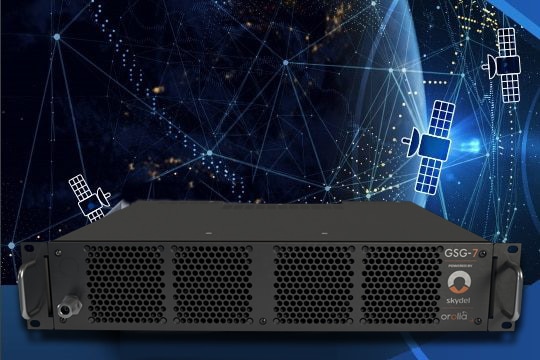
GNSS Testing: What Tests Should You Use?
With the availability of multiple GNSS constellations that transmit signals on multiple frequencies, and various available technologies to improve the accuracy of GNSS, evaluating and selecting a receiver can be a significant undertaking. A great deal of time and effort usually goes into receiver selection, and then there is the engineering effort required to integrate the receiver into the final product.
Systems integrators may think that their receivers were already tested by the manufacturer and that there was no need to test again in the final product. However, this would not be an accurate assessment. How the receiver is integrated can have a major impact on product performance. The placement of the antenna and associated components is also important, if the antenna is integrated into the product.
Ensuring that the system is not generating noise that interferes with GNSS reception is another key reason to test. Testing in the environment and under the conditions in which the product must operate are a major part of product development, and these should not be overlooked.
The best method to perform this testing is by using a GNSS simulator. A GNSS simulator allows for repeatable testing of devices with GNSS receivers in simulated environments.
Before any testing can begin, it is important to put together a test plan. The test plan development ensures that you are testing what needs to be tested for any given application.
There is a basic set of GNSS tests that are defined and well-accepted as key performance tests for GNSS receivers. These tests include:
1. Time To First Fix (TTFF)
This is the amount of time, normally measured in seconds, that the receiver takes to report the date, time, and position (known as a fix) that it calculates. The time is measured from the time the receiver is reset until the receiver reports a fix. There are three different types of resets that can be performed on any receiver. These are known as cold, warm, and hot starts.
2. Position Accuracy
Position accuracy is measured by comparing the truth data from the GNSS simulator to the position reported by the receiver. Position accuracy is measured under different motion profiles and/or at different locations.
3. Timing Accuracy
Timing accuracy tests are performed by comparing the 1 pulse per second signal (1PPS) from the GNSS simulator to the 1PPS signal generated by the receiver under test. Using a time interval counter or an oscilloscope, it is possible to determine the timing accuracy of the receiver. Like position accuracy tests, the measurements are collected over time, every second.
4. Sensitivity Receiver
Sensitivity is the lowest power level that the GNSS signals can have for the GNSS receiver to be able to lock onto them and continue tracking. There are two important types of sensitivity: acquisition and tracking. Acquisition sensitivity is the power level that the GNSS signal needs to have for a receiver to lock onto it for the first time. Tracking sensitivity is the power level needed for the receiver to keep tracking the signals after acquisition.
5. GNSS Errors and Impairments
There are naturally occurring and man-made conditions in a live environment that have an impact on the results of these basic tests. It is important to test the device or product in the environment that the device is expected to operate in. Without these additional tests, a GNSS product may operate well in ideal environments but not operate well at all in real-world environments.
The key things that add error and affect performance of the GNSS receiver or interfere with the ability of the receiver to get a fix are the ionosphere, the troposphere, multipath, local RF interference, and limited sky views. The GNSS system itself may also have errors, such as incorrect ephemeris data or corrupted messages.
As the GNSS signal travels from the satellite to a receiver near or on earth, it travels through the ionosphere and troposphere. For a space vehicle, the signal may go through more of the ionosphere or none at all. Any simulator selected for testing should have the ability to change the atmospheric models and add errors into the ionosphere so the receiver equipment may be tested under different error conditions.
To learn more about these tests, how to create a test plan and conduct the tests, access the complete GNSS testing guide on the right sidebar.
Still Curious? Contact Us


